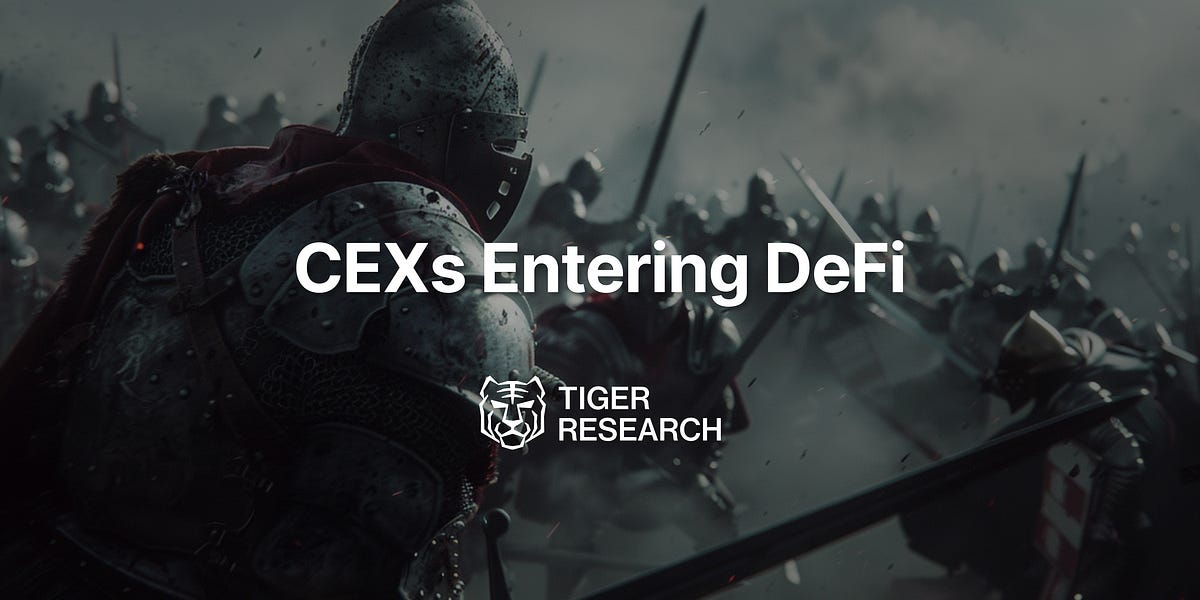Bybit Set to Launch ByReal: Revolutionizing Crypto Trading Experience

Centralized Exchanges Embrace DeFi: Strategies and Implications
Introduction to CEXs in the DeFi Landscape
Recent analysis by Tiger Research highlights the increasing involvement of major centralized exchanges (CEXs) such as Bybit, Binance, and Coinbase in the decentralized finance (DeFi) sector. This report delves into the motivations behind this trend and the strategies these exchanges are employing to navigate the evolving landscape.
- Introduction to CEXs in the DeFi Landscape
- Strategic Differentiation Among Major Exchanges
- Binance’s Retail-Focused Approach
- Bybit’s Independent Platform
- Coinbase’s Dual-Track Model
- The Shift of CEXs Towards On-Chain Services
- The Need for Speed in Token Listings
- Creating a Controlled Environment for Token Trading
- The Future of CeDeFi: Blurring Lines Between Centralized and Decentralized Finance
- Evolving Roles of Exchange Tokens
- The Convergence of CEXs and DeFi Protocols
- User Behavior and Market Dynamics
- Addressing User Friction in DeFi
- Strengthening User Retention and Platform Loyalty
- Institutional Participation in DeFi
- Cautious Approach from Institutional Investors
- Incremental Testing of DeFi Opportunities
- Conclusion: The Evolving Landscape of CEXs and DeFi
Strategic Differentiation Among Major Exchanges
Binance’s Retail-Focused Approach
Binance is pioneering a service tailored for retail users, designed to simplify entry into the Web3 ecosystem. This initiative aims to reduce barriers for new users, making it easier for them to engage with decentralized applications.
Bybit’s Independent Platform
Bybit has introduced ByReal, a standalone platform that aims to provide centralized exchange-level liquidity in a decentralized environment. This move reflects Bybit’s commitment to enhancing user experience while maintaining a distinct identity within the DeFi space.
Coinbase’s Dual-Track Model
Coinbase is adopting a dual-track strategy that caters to both retail and institutional clients. This approach allows the exchange to serve a diverse user base while ensuring compliance with regulatory standards.
The Shift of CEXs Towards On-Chain Services
The Need for Speed in Token Listings
As new tokens increasingly launch on decentralized exchanges (DEXs), centralized exchanges face delays in listing these assets due to regulatory scrutiny. This lag can result in lost trading volume and revenue opportunities. By offering on-chain services, CEXs can engage with emerging tokens more swiftly, retaining users and capitalizing on early trading activity.
Creating a Controlled Environment for Token Trading
CEXs are establishing semi-controlled environments where tokens can be traded without undergoing formal listing processes. This allows exchanges to monetize user activity through fees while minimizing regulatory risks associated with new token listings.
The Future of CeDeFi: Blurring Lines Between Centralized and Decentralized Finance
Evolving Roles of Exchange Tokens
As exchanges integrate on-chain services, the role of their native tokens is also changing. These tokens are transitioning from mere fee discounts to becoming essential assets that facilitate interactions between centralized and decentralized platforms.
The Convergence of CEXs and DeFi Protocols
The integration of on-chain services by CEXs signifies a shift in how these platforms view DeFi. Rather than seeing it as a separate entity, exchanges are beginning to incorporate DeFi elements into their core offerings, potentially reshaping the market structure.
User Behavior and Market Dynamics
Addressing User Friction in DeFi
Despite the innovative potential of DeFi, many mainstream users find it challenging to navigate the complexities of decentralized platforms. CEXs are responding by embedding DeFi functionalities directly into their interfaces, allowing users to access these opportunities without the usual barriers.
Strengthening User Retention and Platform Loyalty
By providing seamless access to DeFi products, CEXs aim to retain users who might otherwise turn to DEXs for their trading needs. This strategy not only enhances user experience but also fortifies the exchange’s competitive position in the market.
Institutional Participation in DeFi
Cautious Approach from Institutional Investors
While the entry of institutional capital into DeFi is anticipated, significant inflows are unlikely in the immediate future. Institutions remain wary due to unresolved risks such as regulatory uncertainties and vulnerabilities associated with smart contracts.
Incremental Testing of DeFi Opportunities
Initial participation from institutional players is expected to be cautious, with smaller allocations being tested. This gradual approach may still contribute to market depth and stability over time.
Conclusion: The Evolving Landscape of CEXs and DeFi
The movement of centralized exchanges into the DeFi space marks a pivotal moment in the cryptocurrency industry. As these platforms develop their own on-chain infrastructures, the distinction between traditional exchanges and decentralized protocols is becoming increasingly blurred. This convergence could lead to a more integrated market where liquidity flows freely between centralized and decentralized environments, offering users a range of options that balance trust, transparency, and convenience.
As the landscape continues to evolve, the strategies employed by exchanges like Bybit, Binance, and Coinbase will play a crucial role in shaping the future of finance.







